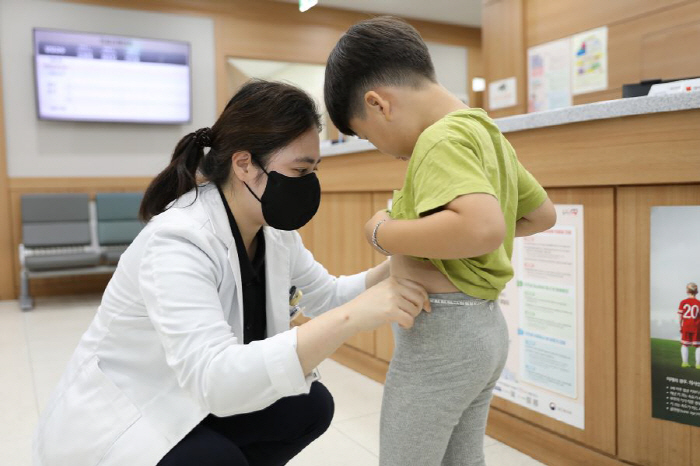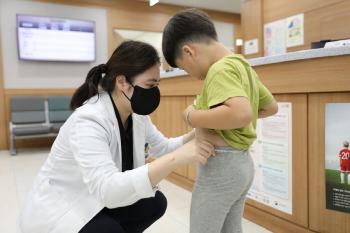Childhood Fatty Liver Prediction, This Indicator Is More Accurate Than BMI
Oct 16, 2025
In a study conducted in collaboration with the pediatric and adolescent departments of six university hospitals in Korea, Professor Choi Yu-jin of the Department of Pediatrics and Adolescents at Ilsan Paik Hospital, Inje University, suggested that the Waist-to-Hip Ratio (WHR) could be a more effective indicator than the existing body mass index (BMI) in predicting non-alcoholic fatty liver disease (NAFLD) in children and adolescents.
The research team conducted an analysis of 781 children and adolescents aged 10 to 19 who received hospital treatment from January 2022 to December 2023. These are patients treated for obesity, weight gain, and liver dysfunction.
As a result of the study, 39.6% (309) of all subjects were diagnosed with fatty liver. The incidence of boys (51.1%) was more than twice as high as that of girls (23.1%). In addition, the research team calculated 0.825 for boys and 0.875 for girls as criteria for the waist-hip ratio, and if these values were exceeded, there was a clear association with fatty liver occurrence.
Particularly noteworthy, more cases of waist-hip ratio exceeded the baseline than those with BMI above 95 percentile among fatty liver patients. This suggests that the waist-hip ratio, which directly reflects the distribution of abdominal fat, is more suitable for fatty liver risk prediction than BMI, which simply calculates the weight-to-height ratio.
These differences were also identified in actual clinical cases. For example, although BMI was in the normal range, fatty liver was found in 12-year-old boys whose waist-hip ratio exceeded the baseline, whereas BMI was at the level of obesity, but girls whose waist-hip ratio was below the baseline did not show fatty liver.
Professor Choi Yu-jin of the Department of Pediatrics and Adolescents at Ilsan Paik Hospital explained, "This study is of great significance in that simple physical measurements can screen for the risk of childhood fatty liver early. If we measure the waist and hip circumference together during school checkups or regular health checkups in the future, we will be able to detect and manage childhood fatty liver more effectively."
The research team expects that if the results are reflected in the future health examination system for children and adolescents, it will contribute to reducing the burden of chronic liver disease and social medical expenses caused by fatty liver.
Meanwhile, the results of this study were published in the recent issue of the international journal Acta Bio-Medica.
The research team conducted an analysis of 781 children and adolescents aged 10 to 19 who received hospital treatment from January 2022 to December 2023. These are patients treated for obesity, weight gain, and liver dysfunction.
As a result of the study, 39.6% (309) of all subjects were diagnosed with fatty liver. The incidence of boys (51.1%) was more than twice as high as that of girls (23.1%). In addition, the research team calculated 0.825 for boys and 0.875 for girls as criteria for the waist-hip ratio, and if these values were exceeded, there was a clear association with fatty liver occurrence.
Particularly noteworthy, more cases of waist-hip ratio exceeded the baseline than those with BMI above 95 percentile among fatty liver patients. This suggests that the waist-hip ratio, which directly reflects the distribution of abdominal fat, is more suitable for fatty liver risk prediction than BMI, which simply calculates the weight-to-height ratio.
These differences were also identified in actual clinical cases. For example, although BMI was in the normal range, fatty liver was found in 12-year-old boys whose waist-hip ratio exceeded the baseline, whereas BMI was at the level of obesity, but girls whose waist-hip ratio was below the baseline did not show fatty liver.
Professor Choi Yu-jin of the Department of Pediatrics and Adolescents at Ilsan Paik Hospital explained, "This study is of great significance in that simple physical measurements can screen for the risk of childhood fatty liver early. If we measure the waist and hip circumference together during school checkups or regular health checkups in the future, we will be able to detect and manage childhood fatty liver more effectively."
The research team expects that if the results are reflected in the future health examination system for children and adolescents, it will contribute to reducing the burden of chronic liver disease and social medical expenses caused by fatty liver.
Meanwhile, the results of this study were published in the recent issue of the international journal Acta Bio-Medica.
|
This article was translated by Naver AI translator.














